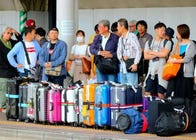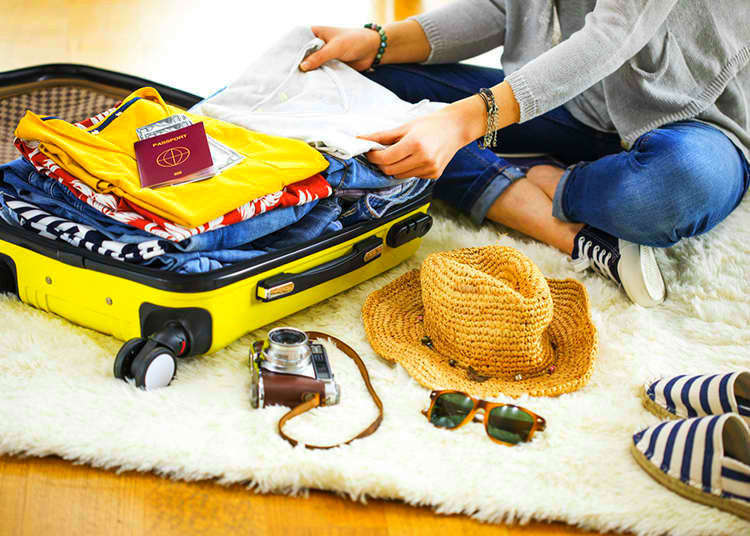
Planning a trip to Japan can be both exciting and daunting. You want to make sure you have everything you need for an enjoyable and stress-free journey, but the fear of forgetting something important can be overwhelming. The last thing you want is to spend precious vacation time scouring stores for essentials you left behind.
To help ease your worries and ensure you have a memorable trip to Japan, we've compiled a list of must-pack items recommended by seasoned travelers. From practical essentials to cultural niceties, these items will not only make your trip more comfortable but also enhance your experience of Japan's unique culture and customs.
So, before you start packing your bags, read on to discover what to bring on your Japan adventure.
1. Cash and credit card
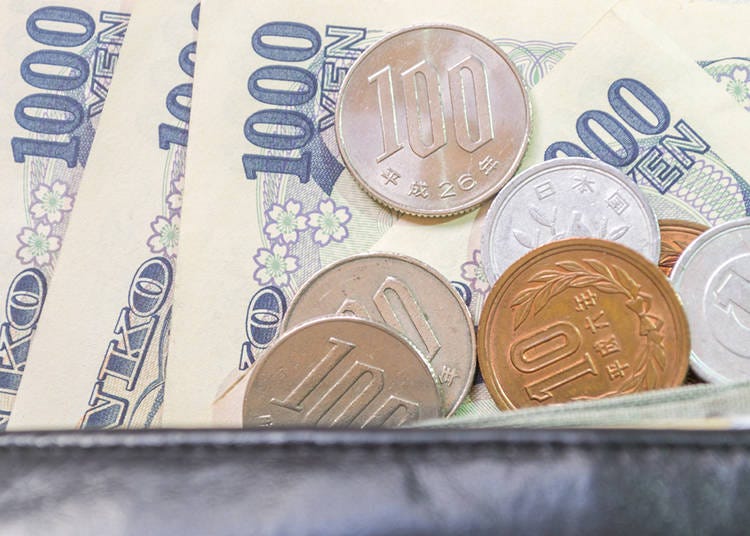
While it may seem mundane, having both a credit or debit card and cash is essential for travelers in Japan. While the country is advanced in many ways, it still has a cash culture, and cards may not be accepted everywhere.
It is recommended to have at least 20,000 yen in cash on hand and to inform your credit card company of your travel plans in advance to avoid declined transactions.
Those with limited cash may be surprised to find that it can be difficult to find an ATM that accepts international cards. To ensure peace of mind, it is best to bring at least half of your spending money in cash.
While carrying all cash raises safety concerns, Japan is a very safe country if common sense precautions are taken, such as not keeping all the money in one place.
If you need to withdraw cash, 7-Eleven or Japan Post Bank branches typically have ATMs that accept international cards, but be aware of withdrawal limits, which can vary by location.
Additionally, paying for small items with large bills, such as 10,000 yen, is generally not an issue in Japan, and currency aside from yen is typically not accepted.
2. Pocket Wi-Fi or a SIM card
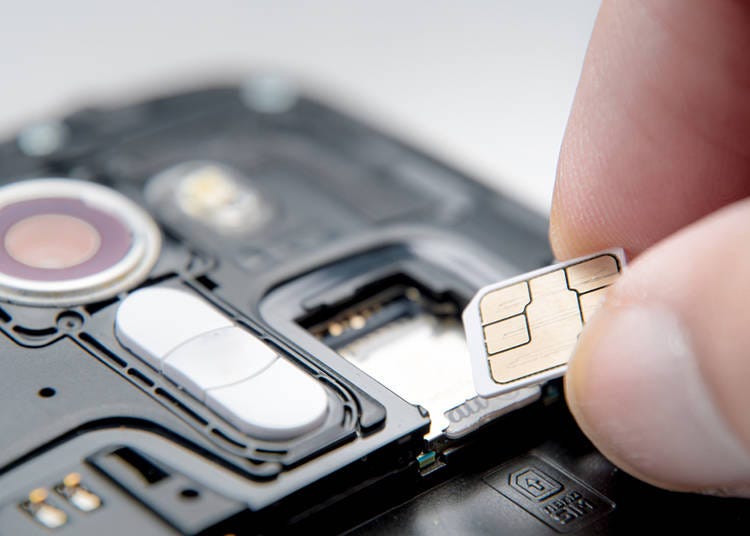
If you bring your mobile phone from home, you may not be able to use the Internet or face high roaming fees when accessing maps and other apps.
A simple solution to this problem is to order a SIM card or portable WiFi before your trip, which will allow you to access the Internet anywhere in Japan.
There are many different SIM and pocket wifi providers at reasonable prices, and you can order it before you arrive in Japan, sometimes even with delivery to your hotel.
The advantage of this is that you can update your social media accounts during your trip and share your experiences with your friends.
3. Download useful apps

Another plus point to having access to the internet wherever you go is that you can use a translation app or phrasebook.
It is best to download this before your arrival so that you can get used to using it, ideally before you are desperately trying to communicate with a hotel owner in the middle of nowhere, but you would be really taken aback to see how much these apps have progressed these days. For someone who doesn’t know a single word of Japanese, it is a real lifesaver.
Using an app will also allow you to experience the Japanese language; you might even pick up some easy words to help you on your journey, such as:
・Sumimasen (excuse me)
・Arigatou gozaimasu (thank you)
・Onegai shimasu (please)
・...wa doko desu ka? (where is...?)
・Ikura desu ka? (how much is it?)
- Transit maps (e.g. Google Maps or Japan Navitime)
- IC cards/train reservation apps (e.g. Suica)
- A translation app like Google Translate (which also supports image translation - perfect for menus)
- Ride-hailing app (e.g. JapanTaxi)
- Earthquake alert (e.g. Prep)
- Weather app
- Messaging (e.g. Facebook Messenger)
4. Electrical adapter and power bank
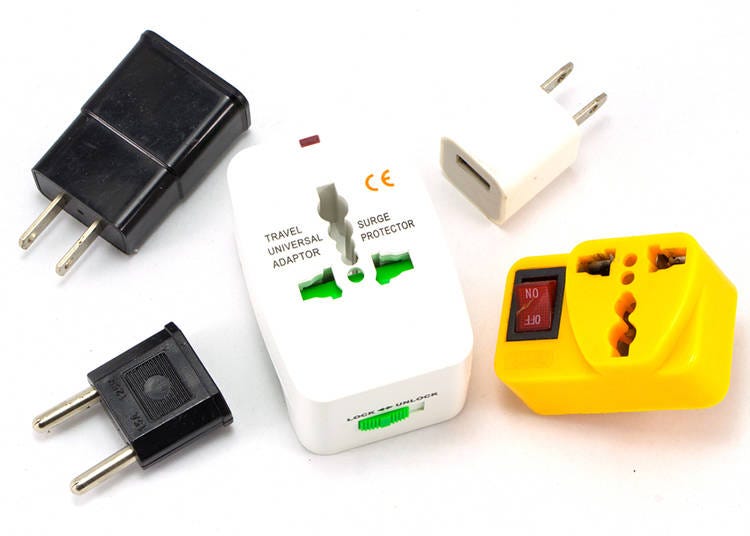
Your mobile phone battery will go down pretty quickly when you are using the internet and apps, never mind any other electrical goods you might have that you want to use, so an adapter is essential to pack.
We all have this vision of Japan as a country where you can get any electrical item you want, whenever you want it, but actually, you will struggle to find a Japanese adapter that works with a Spanish or British plug – especially in the countryside or at 3 a.m. in Shibuya, Tokyo. It is really something that none of us can live without.
If you are coming from the United States or Canada, most electronics can be used as-are: Japan runs on a 100-volt current that keeps them happy. Be aware, however, that 3-prong outlets are not, for the most part, available in Japan and that you may want a slim adapter if bringing a laptop or other device.
Finally, you may also wish to consider bringing a portable USB power bank to keep your devices juiced when you’re on the go.
Where can I buy a plug adapter and power bank?
If you do not yet have a plug adapter or power bank, you can pick one up at an electronics store such as BicCamera or Yodobashi Camera. Many convenience stores will also carry simple tech like power banks and SD cards as well.
5. Japan Rail Pass
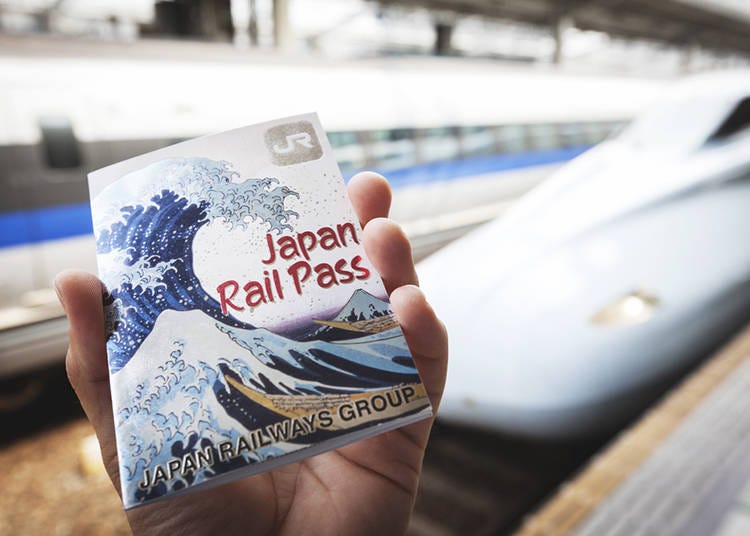
If you are more of a gung-ho traveler who arrives in a country without planning your stay, then you might become a bit unstuck when you realize that a Japan Rail Pass is one of the most cost- and time-efficient ways to travel around the whole country. The reason being the fact that you need to buy the pass before you arrive in Japan.
While it may be possible to buy a Japan Rail Pass at a few stations in Japan, but these are more expensive than buying online before you arrive. (Buying and reserving beforehand really helps make your journey so much simpler – especially if you intend to visit several places around the country and not just stay in the Tokyo area.)
Passes are sold as either one-week, two-week, or three-week tickets, and they allow you to use the Shinkansen to travel the whole length of the country, as well as all JR lines in Tokyo – plus the Narita Express train between Narita airport and Tokyo.
Before you pick up a pass, though, it's best to run your itinerary through a service like Google Maps or Hyperdia, noting prices of different transportation options to make sure that a Japan Rail Pass makes sense.
One of the easiest considerations is that if you are going from Tokyo to Kyoto, then explore around the Kansai region for a short while before heading again to Tokyo, then the Japan Rail Pass may make sense for you. If, however, you intend to stay around a specific area - e.g., just around Osaka/Kyoto or Tokyo - then a day pass or regular train tickets might make the most sense.
6. Right clothes – and layers – for the weather
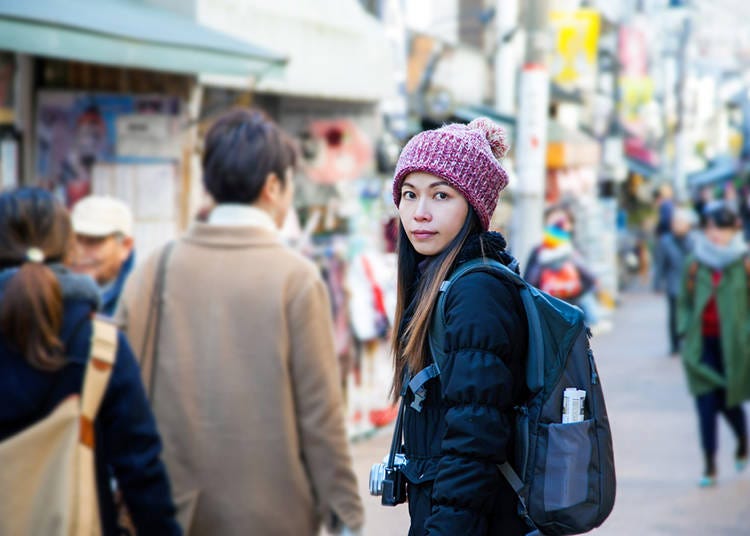
It sounds like common sense to say that clothes are essential, but actually, for Japan you have to think quite hard about weather and clothes.
In the summer it is really hot, and in the winter it is quite cold. During the winter there can be heavy snow in the north but mild temperatures in the south. It can even be confusing if you are just staying in one place: for example, if you are in Tokyo when it is cold the obvious thing to do is dress warmly, but then you get on a train and you start to feel uncomfortably warm!
There can be quite a temperature difference between being outside and being inside, trains and department stores, in particular, seem to maintain a quite high temperature – which is a bit of a nightmare for someone padded out in several layers of clothes. The best advice is to check what the weather is like during your stay and bring clothes which can easily be taken off.
- Spring (March-May)
- Average temp: 17°C (63°F). Tends to be rainy toward June, but otherwise pleasant.
- Summer (June-August)
- Average temp: 27°C (81°F). Tends to be very hot and humid.
- Autumn (September-November)
- Average temp: 20°C (68°F). Generally pleasant except toward late August-September, during typhoon season.
- Winter (December-February)
- Average temp: 9°C (48°F). Tends to range from cold to freezing, but minimal precipitation.
- Clothing: 7 sets of comfortable, weather-appropriate outfits (considering the season)
- Clothing: 7 pairs of socks and underwear
- Clothing: Pajamas or sleepwear (note that many hotels and especially ryokan will furnish this)
- Toiletries: Makeup and cosmetics (if applicable)
- Toiletries: Toothbrush and toothpaste (note that this, plus soap, shampoo, razors and shaving cream are often available at hotels/ryokan)
- Toiletries: Sunscreen and insect repellent
- Toiletries: Feminine hygiene products (if applicable)
- Tech: Smartphone and charger
- Tech: Camera, charger, and spare SD cards
- Tech: Portable charger or power bank
- Tech: Adapter and converter for Japanese outlets (if necessary)
- Misc: Passport and other travel documents
- Misc: Wallet with cash and credit cards
- Misc: Travel-sized umbrella
- Misc: Lightweight day bag or backpack
- Misc: Medications and prescriptions (if applicable)
- Misc: Portable water bottle
7. Suitcase space
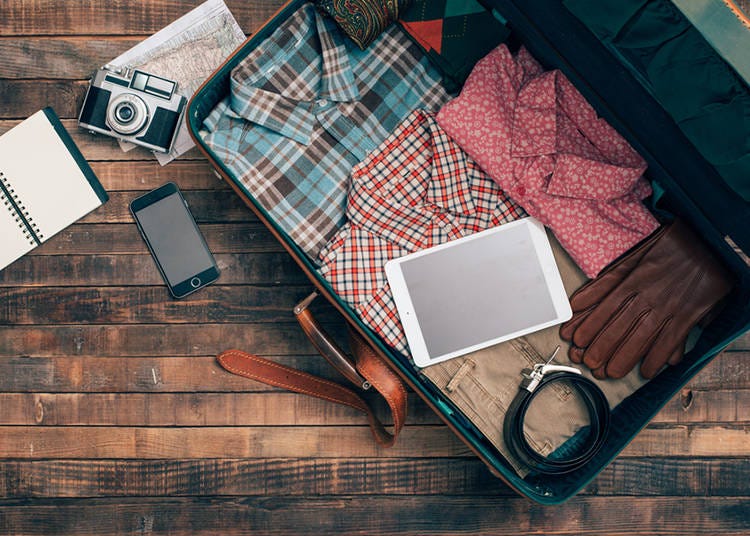
Japan is a culture which is big on gift-giving, especially if you travel on the Shinkansen you are bound to notice the sheer number of gift shops at stations.
So, if you are in Japan to visit friends, and more importantly, if you are going to meet your friend’s relatives, then you need to make room in your suitcase for a few small gifts. Japanese people are very grateful when they receive a gift, and will be quite proud if you give them something unique from your country.
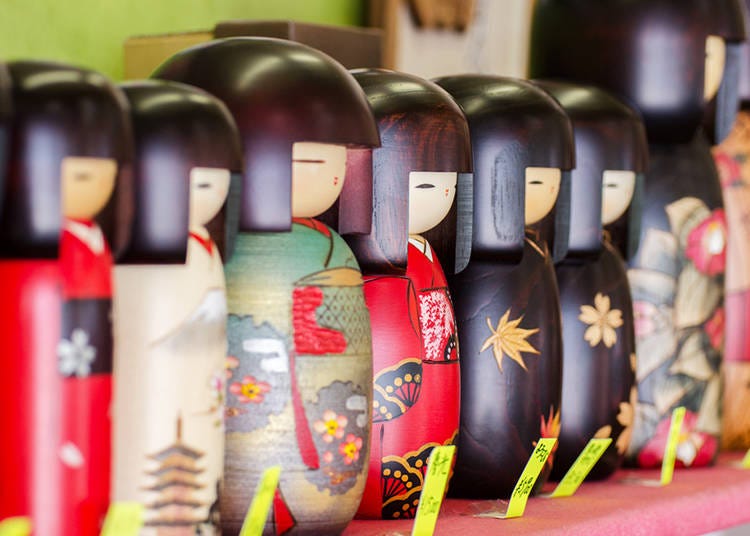
Bringing gifts to Japan will aid one last important thing to include on your list of items to take to Japan or rather a necessity for when you leave Japan, although technically speaking, it isn’t an item – space!
Japan is heaven for shopaholics, but even shop-resistant travelers will find themselves buying traditional crafts, delicious sweets, and more. However, if you bring a fully packed suitcase, then you will struggle to bring anything home. And you don’t want to avoid buying something you really want just because you are thinking about suitcase space all the time! Make sure you just bring what you really need and nothing else, because you will certainly be going home with a heavier suitcase than the one you arrived with.
8. Comfortable walking shoes

As opposed to many other countries, where shoes are typically worn indoors, you'll find that shoelaces impose something of an inconvenience during your stay in Japan. When going to a traditional Japanese restaurant, you'll probably take off your shoes. When staying at a ryokan, you'll be taking them off as well. Going inside a temple? You get the idea: you'll encounter many other occasions in Japan where having a pair of shoes you can easily slip on or off without worrying over laces is such a convenience.
Also, keep in mind that you'll want a pair of comfortable walking shoes. Many visitors remark that they walked more during their stay in Japan than they typically do in their home country. Accordingly, wearing a pair that's kind to your feet will help keep your trip very happy indeed. (The same goes for socks: be sure to bring a warmer pair for winter months and a thinner pair for summer - or even a pair of sandals!)
A top tip by seasoned travelers: if you buy new shoes for your trip, be sure you walk around with them plenty ahead of time in order to get your feet used to them. (It's sometimes better to wear a pair of shoes that are already worn in, to avoid blisters!)
*Prices and options mentioned are subject to change.
*Unless stated otherwise, all prices include tax.
Popular Tours & Activitiess
Recommended places for you
-

Kambei Sannomiyahonten
Yakiniku
Kobe, Sannomiya, Kitano
-
Appealing

Rukku and Uohei
Izakaya
Sapporo / Chitose
-
Goods

Yoshida Gennojo-Roho Kyoto Buddhist Altars
Gift Shops
Nijo Castle, Kyoto Imperial Palace
-

ISHIDAYA Hanare
Yakiniku
Kobe, Sannomiya, Kitano
-

Kanzenkoshitsuyakinikutabehodai Gyugyu Paradise Sannomiya
Yakiniku
Kobe, Sannomiya, Kitano
-

Jukuseiniku-to Namamottsuarera Nikubaru Italian Nikutaria Sannomiya
Izakaya
Kobe, Sannomiya, Kitano
-
Ad

Complete Guide to Ueno's National Museum of Nature and Science, the Perfect Place to Visit on Rainy Days or With Children
-
Ad

[Tokyo, Ueno] Journey to the Sacred Grounds of the Tokugawa Shoguns: Join the "EDO SHOGUN’S LEGACY TRAIL TOUR" – Where Special Access, Modern Art, and Digital Innovation Converge
by: Guest Contributor
-

Japan’s Shinkansen Is About to Change Travel in an Unexpected Way
by: Guest Contributor
-
Ad

Discover the "Miraculous Forest" in the Heart of Tokyo: The Institute for Nature Study (9 Minutes from JR Meguro Station)
-

These Tokyo Subway Stamps Are Free, Exclusive, and Weirdly Addictive
by: Guest Contributor
-

Jujutsu Kaisen Takes Over JR East With a Wrapped Shinkansen This Winter
by: Guest Contributor
-

Hoshinoya Kyoto: This Incredible Japanese Hotel Welcomes You By Boat on a Sakura-Filled River
-

Atami 1-Day Itinerary: Exploring Japan's Castle & Hot Springs Resort Town Near Tokyo!
-

Seven Rules You Should Know When You Go to Japan
-

Explore the Electric Town for geeks!
-

Aizu-Wakamatsu Sake Crawl: Enjoy the Heart of Fukushima's Sake Culture
-

[MOVIE] Survival Japanese: Shopping
- #best sushi japan
- #what to do in odaiba
- #what to bring to japan
- #new years in tokyo
- #best ramen japan
- #what to buy in ameyoko
- #japanese nail trends
- #things to do japan
- #onsen tattoo friendly tokyo
- #daiso
- #best coffee japan
- #best japanese soft drinks
- #best yakiniku japan
- #japanese fashion culture
- #japanese convenience store snacks
















